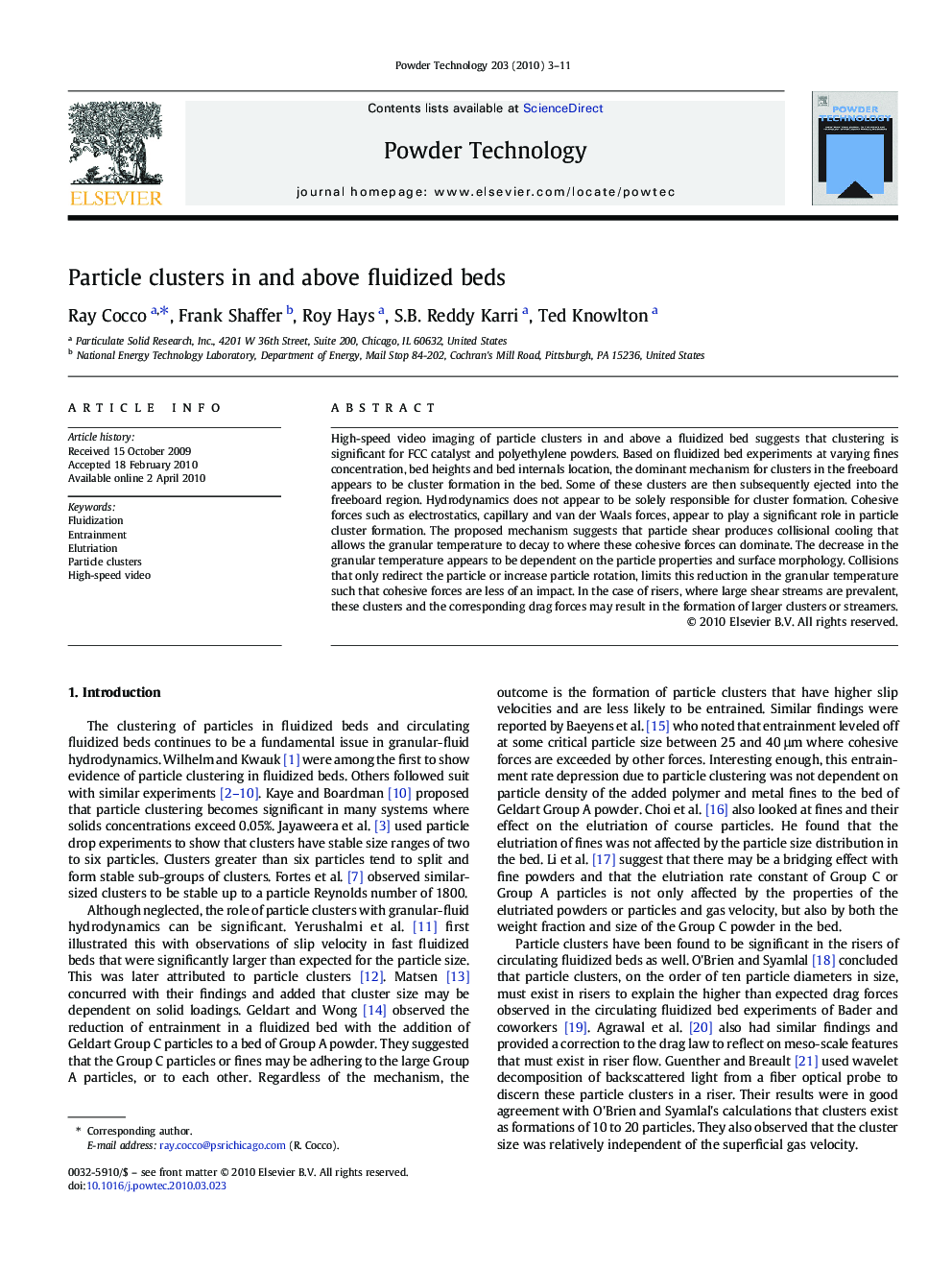| کد مقاله | کد نشریه | سال انتشار | مقاله انگلیسی | نسخه تمام متن |
|---|---|---|---|---|
| 237800 | 465726 | 2010 | 9 صفحه PDF | دانلود رایگان |

High-speed video imaging of particle clusters in and above a fluidized bed suggests that clustering is significant for FCC catalyst and polyethylene powders. Based on fluidized bed experiments at varying fines concentration, bed heights and bed internals location, the dominant mechanism for clusters in the freeboard appears to be cluster formation in the bed. Some of these clusters are then subsequently ejected into the freeboard region. Hydrodynamics does not appear to be solely responsible for cluster formation. Cohesive forces such as electrostatics, capillary and van der Waals forces, appear to play a significant role in particle cluster formation. The proposed mechanism suggests that particle shear produces collisional cooling that allows the granular temperature to decay to where these cohesive forces can dominate. The decrease in the granular temperature appears to be dependent on the particle properties and surface morphology. Collisions that only redirect the particle or increase particle rotation, limits this reduction in the granular temperature such that cohesive forces are less of an impact. In the case of risers, where large shear streams are prevalent, these clusters and the corresponding drag forces may result in the formation of larger clusters or streamers.
High-speed video imaging of particle clusters in and above a fluidized bed suggests that clustering is significant for FCC catalyst and polyethylene powders. Based on fluidized bed experiments at varying fines concentration, bed heights and bed internals location, the dominant mechanism for clusters in the freeboard appears to be cluster formation in the bed. Some of these clusters are then subsequently ejected into the freeboard region. Hydrodynamics does not appear to be solely responsible for cluster formation. Cohesive forces such as electrostatics, capillary and van der Waals forces, may play a significant role in particle cluster formation.Figure optionsDownload as PowerPoint slide
Journal: Powder Technology - Volume 203, Issue 1, 25 October 2010, Pages 3–11